The experts and the statistics will tell us that it has been a mild winter, but it was still a winter. And it is finally almost over! Area marinas and boatshops are gearing up for the spring launching frenzy after a busy winter. Supply problems seem to be a thing of the past, almost. But some things still have surprisingly long delivery times. I spent most of my column in December bemoaning the ongoing manpower crisis in our industry. This month I want to give a tip of the hat to some people who are trying to help.
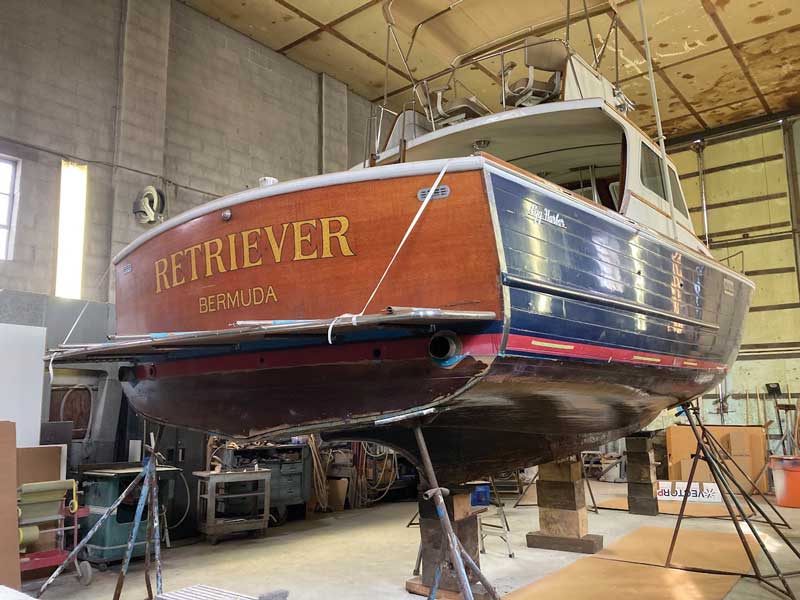
Kaitlyn Bize, workforce development coordinator for the Marine Trades Association of Maryland (MTAM) sends us two reports. “Adam O’Sullivan completed MTAM’s On the Job Training (OJT) program at Port Annapolis Marina in Annapolis, MD, in September of 2022. Since he was hired full-time at Port Annapolis Marina, he has attended welding classes and hopes to expand his knowledge further by attending marine electrical classes at Chesapeake College.
“Luke Carter completed MTAM’s OJT program at Fawcett Boat Supplies in Annapolis, MD, in August of 2021. Carter attended The Center of Applied Technology and completed their Marine Service Program. He also completed The ABYC General Certification in July of 2022. Carter will graduate from South River High School this year and has already been accepted to The Landing School in Maine and will be attending their composite boatbuilding program.”

The next report comes to us from the newspaper of St. Mary’s College in St. Mary’s City, MD. “This past fall, students in the Museum Studies 390 class taught by John Cook, adjunct instructor of museum studies, studied Chesapeake Bay watercraft and built a 14-foot wooden skiff as part of the coursework. The skiff was donated to Historic Sotterley in Hollywood, MD, to be a piece of its ‘Life on the Patuxent River’ display.
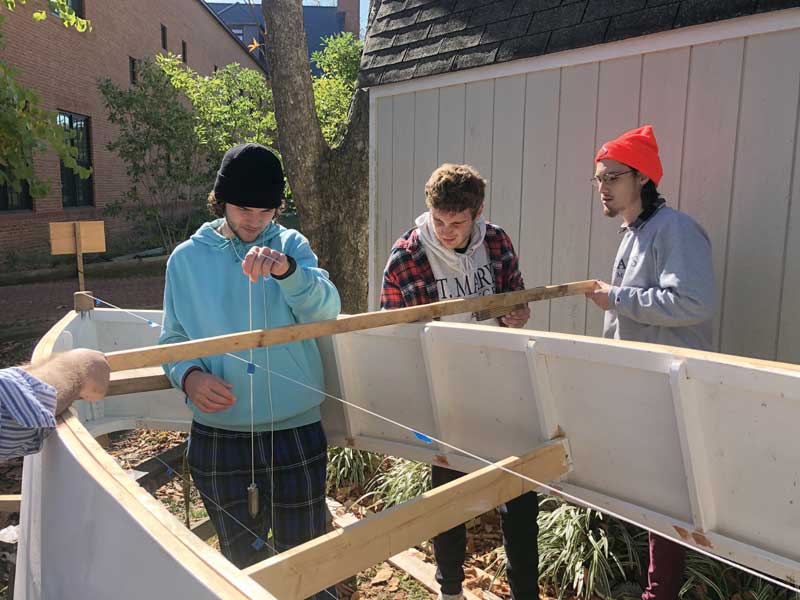
“A historic craft and predecessor of the iconic Chesapeake Bay skipjack, the students built the skiff using some of the same methods used by 17th-century builders. They created a lines drawing by taking the lines off of an existing boat. From the lines drawing, they built a table of offsets (a series of measurements taken at intersecting points of the line drawing). The table of offsets, used with the line drawing, served as the basis from which to loft a model of the boat at a small scale to inform the build of a full-scale version. Lofting is also used to inform a computer modeling program to make a 3D virtual model, or document information for the historical record.
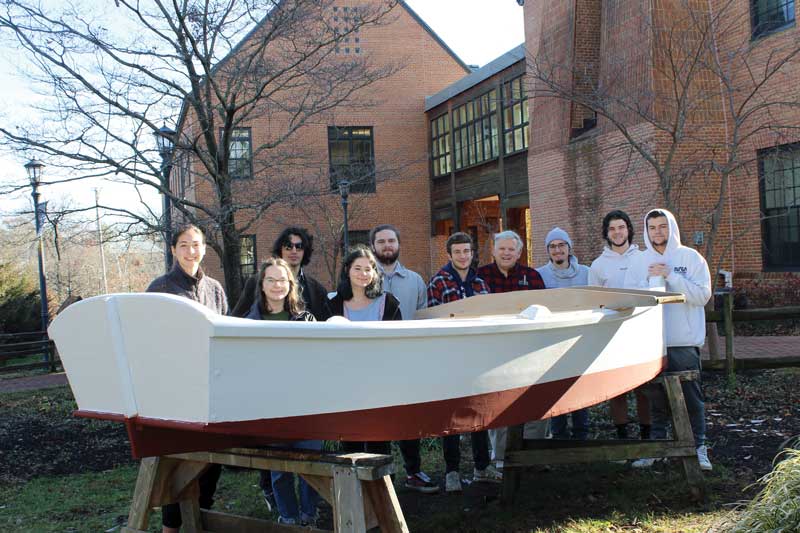
“Two students had taken another museum studies course with Professor Cook on post and beam construction in medieval England and sought out this class for its similar hands-on approach. Chris Lawson ’24 is an anthropology major with a minor in museum studies and interns as a crewmate on the Maryland Dove, a recreated 17th-century vessel at Historic St. Mary’s City. He thrives on the experiential learning afforded by Cook’s approach. Alex Abbott ’22, a history major, opted for Cook’s classes as ‘fun electives’ during his college experience. On the final day of class, the students christened the new boat as is customary, before loading it up for delivery to Historic Sotterley.”
Erica Denner from the Pride of Baltimore sends us this story about a tradition as old as seafaring.
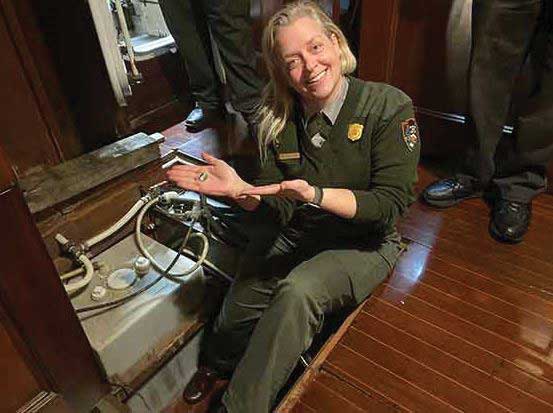
“Congratulations to Susan Hale for being the lucky winner of our year-end donations drawing. On January 31, Susan joined us to place a special coin, a Fort McHenry National Monument and Historic Shrine quarter, under the foremast before it was stepped later this week. We thought it was only fitting that Kate Marks Hardy, our partner at Fort McHenry National Monument and Historic Shrine, put a coin under the mainmast, too.”

Dean Wickline, volunteer team leader for the push boat restoration at Annapolis Maritime Museum in Annapolis, MD, brings us up to date on his project. “We are working to restore this push boat which came with the skipjack Wilma Lee. Push boats were used to push the skipjacks on the days when they could harvest oysters under power. Push boats are small boats, this one is 13 feet, with big engines and big propellers. They were carried on davits at the stern of the skipjack and lowered into the water when needed,” he explained.
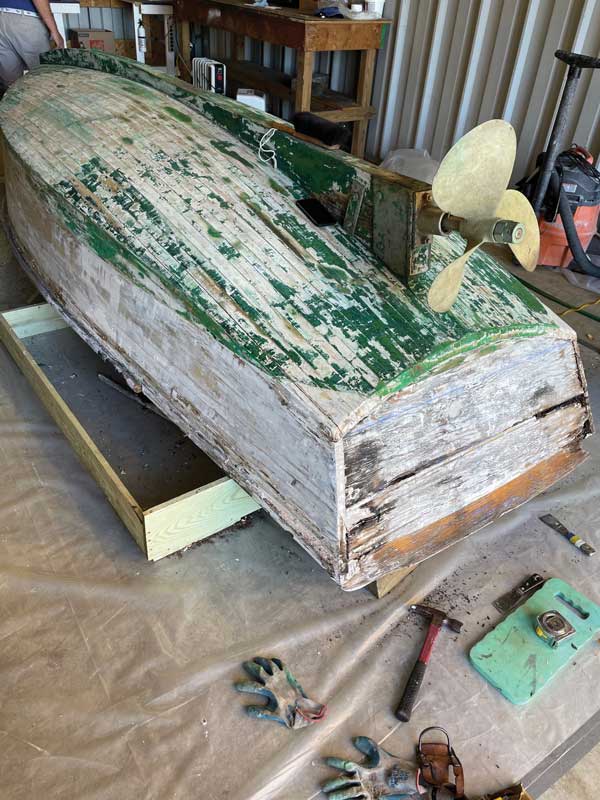
“There are three of us on the team. When we got the boat into the shop here at the Ellen Moyer Park, we got it up on horses and started stripping paint. We found four primary areas where rot had taken hold. Two were on either side of the transom, one on the port quarter of the hull planks and about eight feet of rot under one of the rub rails. We removed the rub rail and removed most of the transom. We replaced all that and glassed the hull. We then had to stop for a while to allow the Box of Rain Project to use the shop,” he concluded. Dean then explained that the boat had engine beds, a propeller shaft, and prop but no engine. “I think the plan the captain has is All Show and No Go,” Dean said. “We’ll complete the restoration and hang the boat from Wilma’s davits without an engine. She has two engines after all, so she doesn’t need a push,” he laughed. Dean said his team is working to have the restoration complete by early summer.
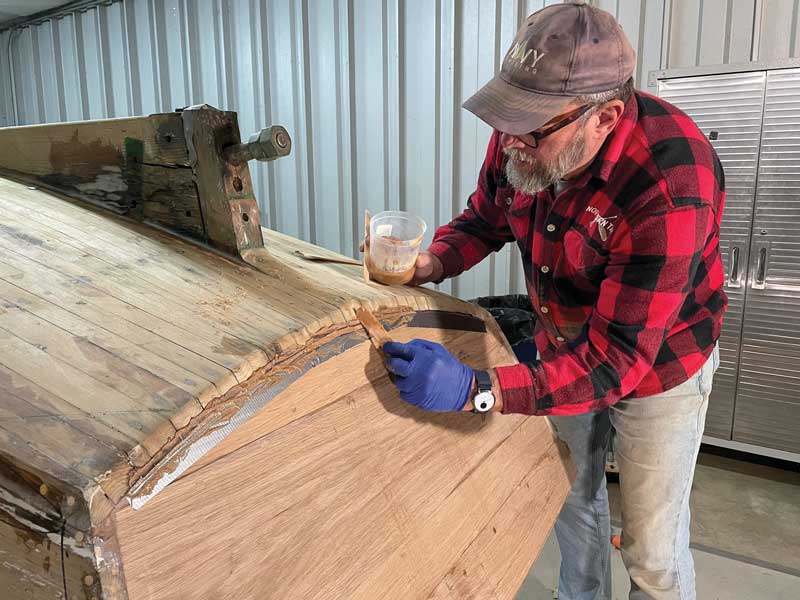
Jake Glover at Ferry Point Marina in Trappe, MD, checks in. “The mechanics finished their long list on a 48-foot Wellcraft. She required one new Volvo Penta outdrive and a significant amount of work on her Volvo Penta gassers. She’s now been moved to the paint shop. That crew is completing a collision repair to her port side, new AwlCraft hull paint, and new Taco rub rail. The work orders for our certified Yanmar, Suzuki, and Yamaha techs are coming in quickly! The yard crew is busy prepping for their 10 bottoms that were all soda blasted last fall and we will receive full Interlux barrier and anti-fouling systems. Our annual bottom paint sale runs until the end of March. Stop into the ship’s store for the best pricing on Nautical ProGuard Ablative! The Hunt Center Console just received new AwlCraft hull paint and stripes as well as new AwlWood application on her toe rail.”
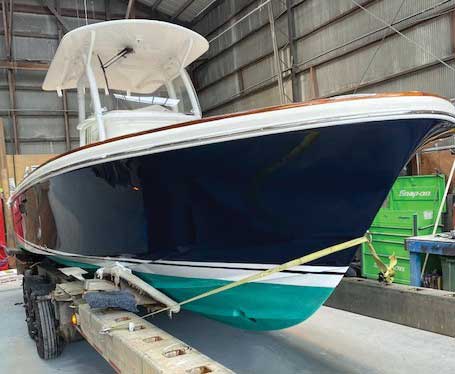
Smokey Glover of Lake Assault Boats’ facility in Portsmouth, VA, updates us. “We have hull no. 22 of a multi-boat multi-year contract to provide security boats to the US Navy. These boats are built at the Lake Assault Boats manufacturing plant in Superior, WI. Government inspections and trials on this boat were performed at the Lake Assault Boats facility in Portsmouth, VA. These are aluminum hull 33-foot boats with full electronics and communications suites, HVAC, gun mounts, and Wing foam filled collars, powered by twin 225-hp Mercury outboards and delivered on Boatmaster trailers.”

Fred Probst at Phipps Boat Works in Deale, MD, shares his thoughts and observations on this winter’s operations. “Our winter has been as busy as ever. We do a lot of the larger projects during the winter when the boats are out of the water. We stay busy around here with lots of window replacement projects and lots of seacocks and thru-hull projects that need to be addressed while the boats are on the hard.” he explained. “I’m currently replacing some in-line ball valves on a 2013 Beneteau, cooling water intakes, galley water discharges, things of that nature,” Fred concluded.
On the subject of winter business he said, “Well, we’ve been extremely busy, just as we have been in the past couple of years. There are so many boats around here and so few people doing the work that we’re all just saturated. With the warm winter it’s been slam busy. With the warmer temperatures there have been a lot of outdoor projects we’ve been able to do. We haven’t been trapped indoors. There are tons of things to do,” he concluded. On the subject of available labor Fred observed, “There’s just not a good feeder system for new people coming into our industry. It’s just hard to find those people who want to make a career in the marine trades.”
Mike Bickford at Campbell’s Boatyards in Oxford, MD, sends us this update. “Campbell’s Boatyards is working on a Dyer 29. The plans call for the boat to be painted with AwlGrip. The topsides, decks, and cabin will all have new finishes when the work is complete. The bottom will be soda-blasted, primed, and painted. All the exterior teak has been stripped and will be refinished. The existing radar arch was removed, and all antennas and electronic systems will be consolidated into a simpler configuration without needing to reinstall the arch. The engine will be removed, cleaned, and thoroughly inspected and serviced. The engine space will get new sound insulation prior to the reinstallation of the engine. We remain very busy and are looking forward to spring.”
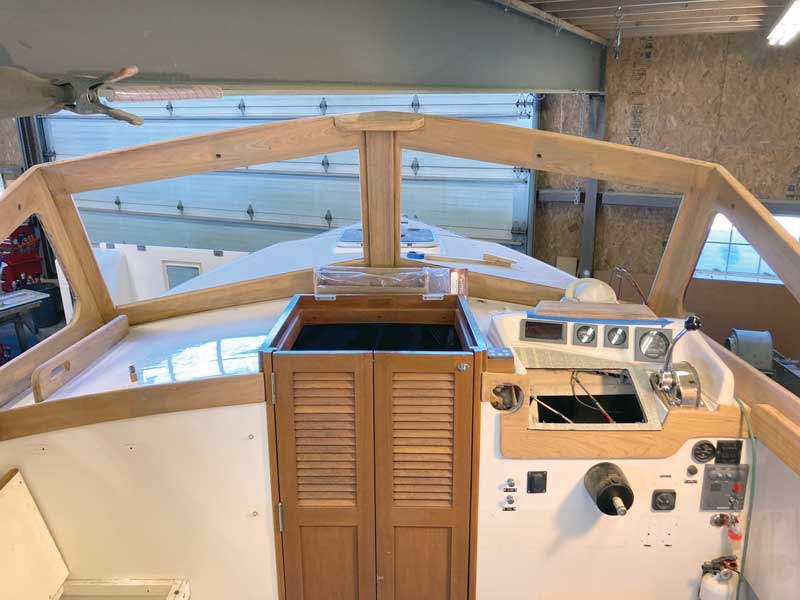
As are we all, Mike!
By Capt. Rick Franke